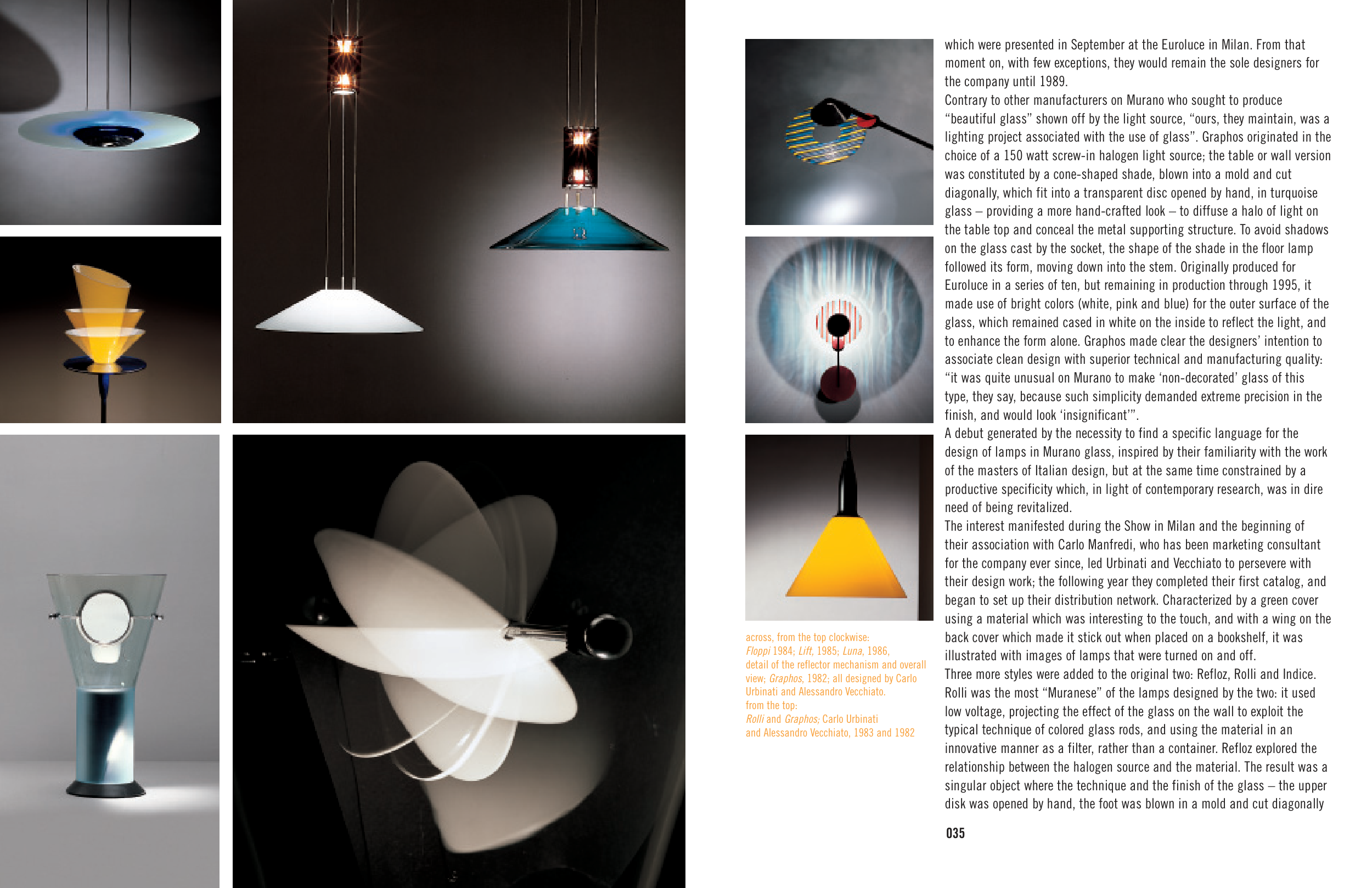035
which were presented in September at the Euroluce in Milan. From that
moment on, with few exceptions, they would remain the sole designers for
the company until 1989.
Contrary to other manufacturers on Murano who sought to produce
“beautiful glass” shown off by the light source, “ours, they maintain, was a
lighting project associated with the use of glass”. Graphos originated in the
choice of a 150 watt screw-in halogen light source; the table or wall version
was constituted by a cone-shaped shade, blown into a mold and cut
diagonally, which fit into a transparent disc opened by hand, in turquoise
glass – providing a more hand-crafted look – to diffuse a halo of light on
the table top and conceal the metal supporting structure. To avoid shadows
on the glass cast by the socket, the shape of the shade in the floor lamp
followed its form, moving down into the stem. Originally produced for
Euroluce in a series of ten, but remaining in production through 1995, it
made use of bright colors (white, pink and blue) for the outer surface of the
glass, which remained cased in white on the inside to reflect the light, and
to enhance the form alone. Graphos made clear the designers’ intention to
associate clean design with superior technical and manufacturing quality:
“it was quite unusual on Murano to make ‘non-decorated’ glass of this
type, they say, because such simplicity demanded extreme precision in the
finish, and would look ‘insignificant’”.
A debut generated by the necessity to find a specific language for the
design of lamps in Murano glass, inspired by their familiarity with the work
of the masters of Italian design, but at the same time constrained by a
productive specificity which, in light of contemporary research, was in dire
need of being revitalized.
The interest manifested during the Show in Milan and the beginning of
their association with Carlo Manfredi, who has been marketing consultant
for the company ever since, led Urbinati and Vecchiato to persevere with
their design work; the following year they completed their first catalog, and
began to set up their distribution network. Characterized by a green cover
using a material which was interesting to the touch, and with a wing on the
back cover which made it stick out when placed on a bookshelf, it was
illustrated with images of lamps that were turned on and off.
Three more styles were added to the original two: Refloz, Rolli and Indice.
Rolli was the most “Muranese” of the lamps designed by the two: it used
low voltage, projecting the effect of the glass on the wall to exploit the
typical technique of colored glass rods, and using the material in an
innovative manner as a filter, rather than a container. Refloz explored the
relationship between the halogen source and the material. The result was a
singular object where the technique and the finish of the glass – the upper
disk was opened by hand, the foot was blown in a mold and cut diagonally
across, from the top clockwise:
Floppi 1984; Lift, 1985; Luna, 1986,
detail of the reflector mechanism and overall
view; Graphos, 1982; all designed by Carlo
Urbinati and Alessandro Vecchiato.
from the top:
Rolli and Graphos; Carlo Urbinati
and Alessandro Vecchiato, 1983 and 1982


